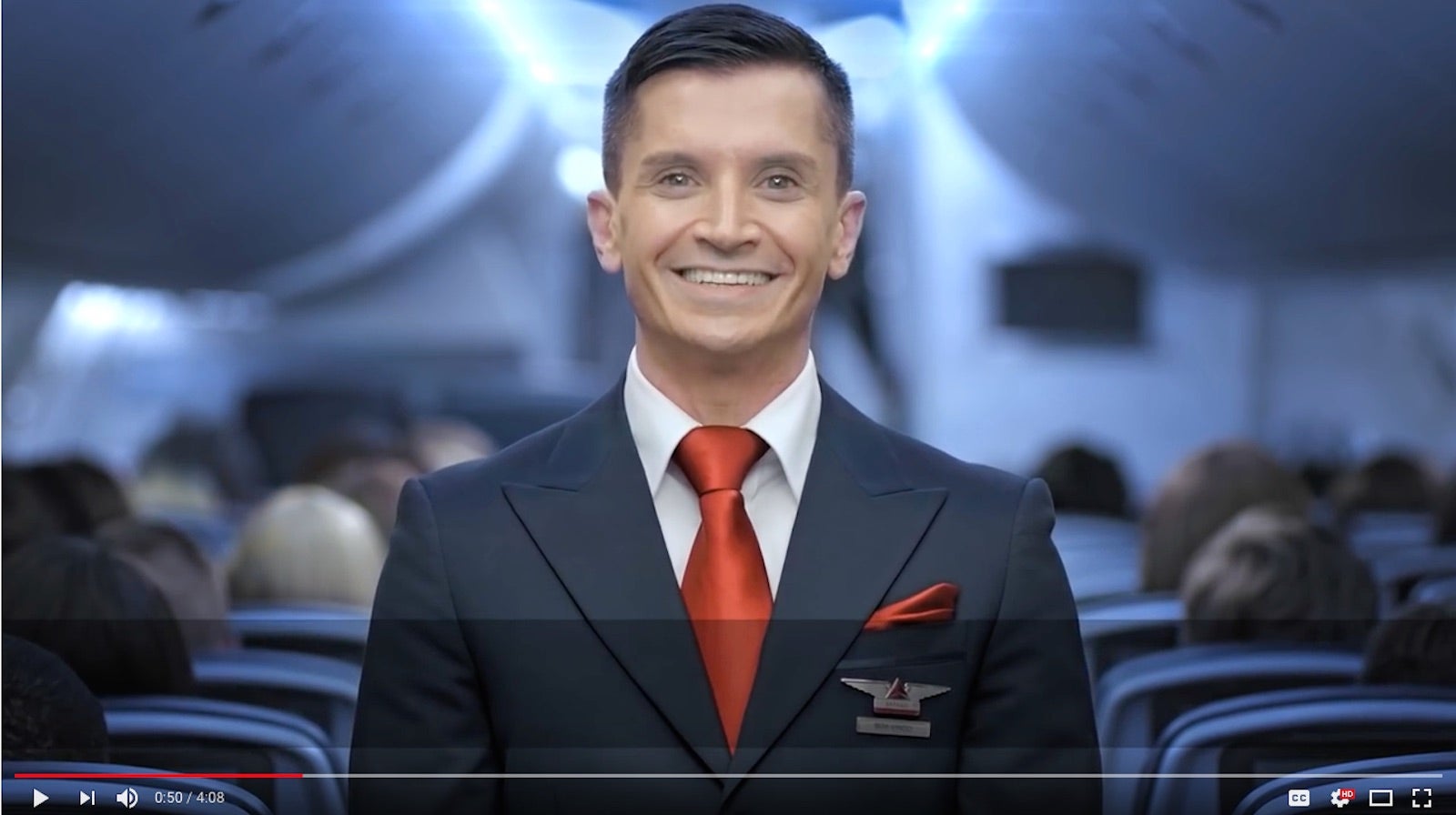What those catchy new airline safety videos can teach you about getting people’s attention
Maybe you have the kind of job that requires, on occasion, holding the attention of others. To understand the challenge of this assignment, consider the humble airline-safety video, which is becoming an increasingly less humble affair as airlines grab for passengers’ ever-shrinking attention spans.


Maybe you have the kind of job that requires, on occasion, holding the attention of others. To understand the challenge of this assignment, consider the humble airline-safety video, which is becoming an increasingly less humble affair as airlines grab for passengers’ ever-shrinking attention spans.
Makers of these films have to grab the attention of as many as several hundred people at once, hold it for an average of 3.5 minutes, cover a federally mandated safety checklist, and overcome one giant obstacle: the near-total indifference of the audience.
Despite the fact that the information within could, technically, make the difference between life and death, historically hardly anyone listens to the in-flight safety briefing. In a 2006 survey of Australian air travelers, 75% of passengers admitted to ignoring some or all of the safety video. Men pay less attention to the briefings than women do, particularly young, educated men who fly alone frequently.
In studies of passengers in the US and Australia, the most common reason passengers give for tuning out is that they’ve already heard it. In the remote chance of an emergency, it feels safe to reason, surely we’d do the right thing.
And yet: we don’t. A 2015 study found that people retain only about half of what they hear in an in-flight safety briefing. The stress of an actual evacuation can make recall even harder. As the Wall Street Journal reported (paywall), when US Airways Flight 1549 landed on the Hudson River in 2009, only 33 of the 150 passengers exited the plane wearing the life vest they’d been instructed to don in the unlikely event of a water landing. Only four had the life vest belt properly fastened. Just 17% told investigators later that they’d watched the safety video.
So how do you get people to pay attention to important information they don’t want to listen to? Industry and academic research on the subject sheds some light on what works in capturing an audience’s attention, as does the engaging new crop of airline-safety videos currently playing in the skies.
Lesson 1: Humor helps hold attention—up to a point
One of the most effective ways to get an audience’s attention is through humor. As a persuasive tool, it works on two levels: it puts the listener in a good mood and distracts the brain from counterarguments (such as, “my book is more interesting than this safety briefing and I should read that instead.”)
Too many jokes, however, can distract from the message at hand.
Lesson 2: Get a familiar face to share it
Messages with celebrities test better than those without them. In one of Molesworth’s studies, participants who watched a safety video introduced by the actor John Travolta recalled as many safety messages as those who watched a funny safety video with no major celebrities.
Outside of big, publicly traded companies, hiring a celebrity spokesperson to deliver key messages is usually not a practical option. That’s ok. Celebrities are effective messengers because they trigger in the brain a feeling of familiarity. Messages that come from a well-known and (more important) well-liked person within any organization carry more weight than those from an obscure source.
Lesson 3: Visual aides in a presentation help
People retain information best when words are paired with visual aides. Moving the safety briefing to the seatback screens in lieu of live demonstrations from flight attendants gives airlines more flexibility in how the information is presented. Delta uses graphics to draw attention to key safety actions on its videos, like a subtle highlight around a seatbelt as it’s being buckled, says Julieta McCurry, Delta’s managing director for marketing communications.
Clear and simple images work best. Studies of in-flight safety cards found that people retained more safety information when images were present than with text alone, and that clear, simple illustrations were more effective than visually cluttered photographs. (That said, people pay even less attention to the safety cards than they do the video briefings.)
Lesson 4: Leave people in a good mood
People in a good mood make better decisions and work more efficiently—qualities that can be life-saving in an emergency situation. When Molesworth and colleague Morteza Tehrani conducted a study in which participants simulated an airplane evacuation, subjects who had been shown unpleasant photographs of war at the start of the experiment made a lot more errors than those who looked at pleasant images. Delta, for one, has made a conscious effort to move from jokey, theatrical productions to calming images in its safety videos, McCurry said.